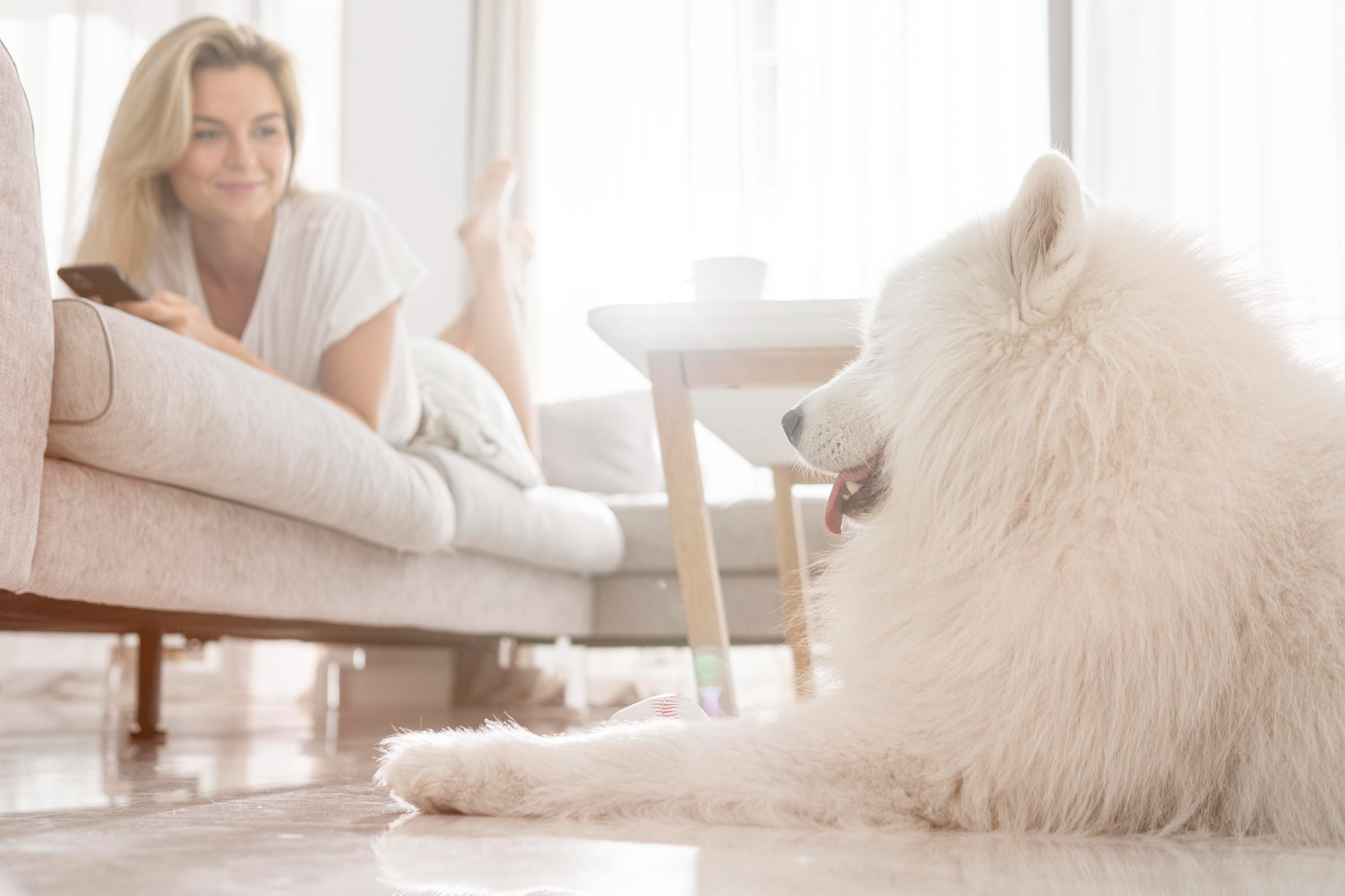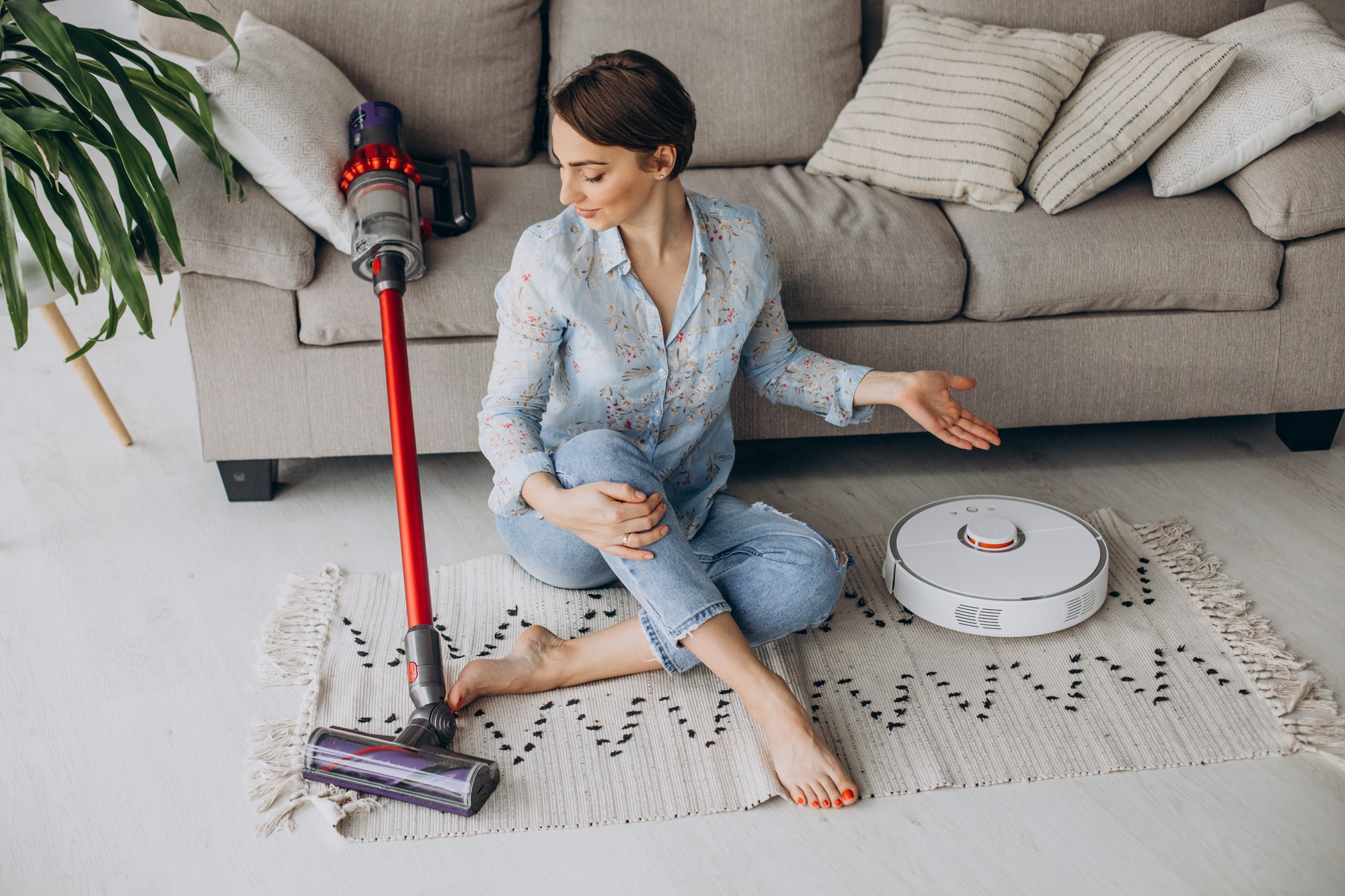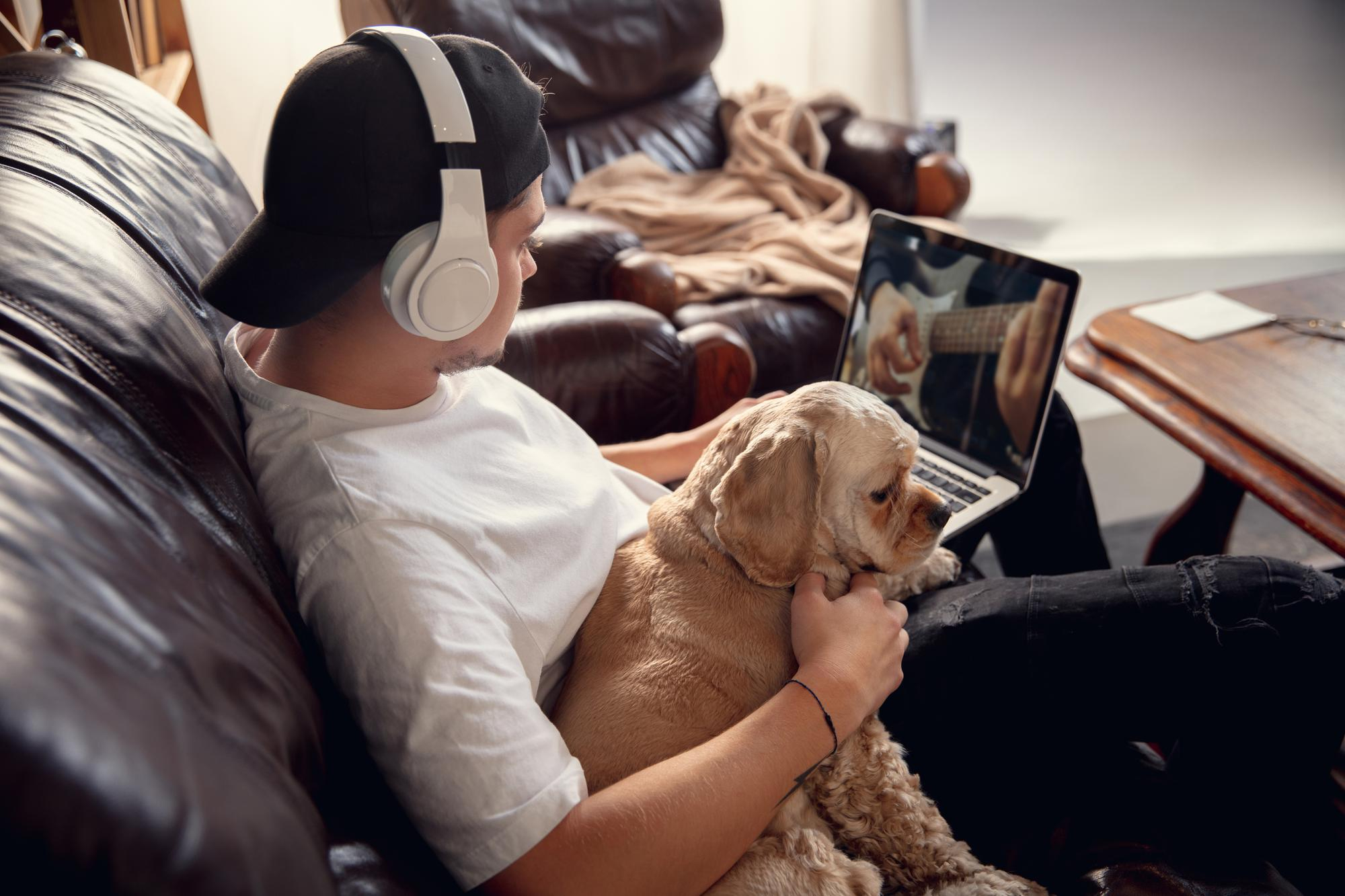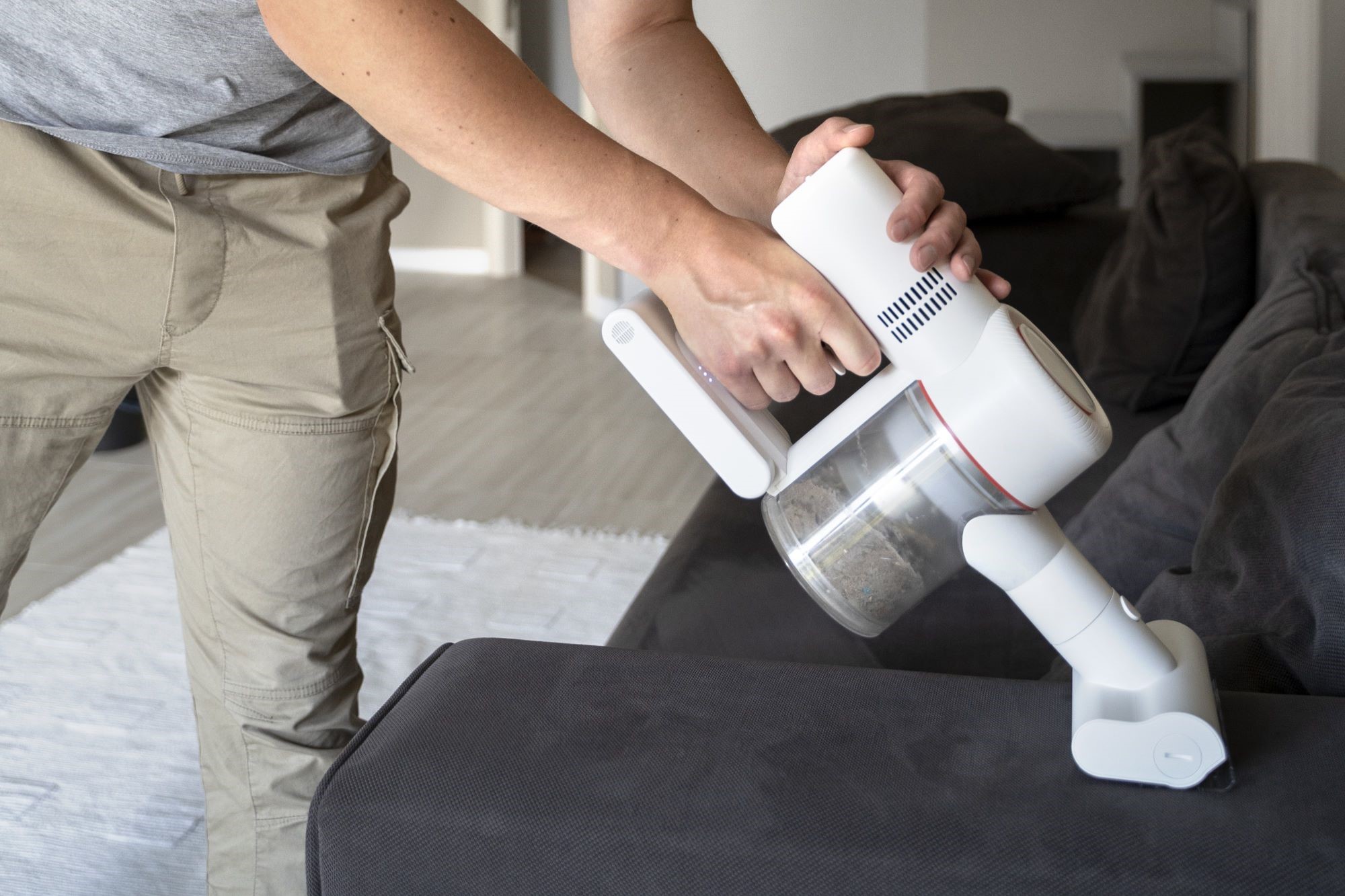Owning a pet brings immense joy and companionship, but it also introduces certain challenges. One of the most common issues for pet owners is managing the accumulation of pet hair on fabric sofas. Pet hair can be particularly stubborn, sticking to your upholstery and creating a less-than-ideal living environment. But don’t fret—there are effective strategies you can employ to keep your sofa clean and free of pet hair. In this comprehensive guide, we’ll explore a range of methods to minimize pet hair accumulation, ensuring your fabric sofa remains fresh and inviting.
Understanding the Problem
Why Does Pet Hair Stick to Fabric?
To effectively combat pet hair on your sofa, it’s essential to understand why it sticks in the first place. Pet hair clings to fabric due to a combination of static electricity and the texture of the fabric itself. Fabrics with a rough texture or loops, like tweed or velvet, can trap hair more easily. Static electricity builds up on fabric surfaces, creating an attraction between the hair and the fibers. This static cling makes the hair adhere stubbornly, making it more challenging to remove.
Types of Fabrics and Their Hair Cling
Different types of fabric react differently to pet hair. Understanding these nuances can help you choose the most effective cleaning and prevention methods for your specific sofa. Here’s a table to illustrate how various fabrics interact with pet hair:
| Fabric Type | Hair Cling Characteristics | Cleaning Considerations |
| Velvet and Velour | These fabrics have a soft, plush texture that easily traps hair. | Regular brushing and gentle vacuuming are recommended. |
| Microfiber | Known for its durability and stain resistance, microfiber can still attract pet hair due to its fine fibers. | Use a vacuum with a brush attachment; consider using a lint roller. |
| Cotton and Linen | These fabrics are generally easier to clean but can still trap hair in their weave. | Regular vacuuming and occasional washing or steam cleaning are effective. |
By understanding how different fabrics handle pet hair, you can select the best cleaning tools and strategies to keep your sofa in optimal condition.
Regular Maintenance Tips
Vacuum Regularly
One of the most effective ways to manage pet hair is through regular vacuuming. Vacuuming helps to remove hair before it becomes deeply embedded in the fabric.
How to Vacuum Your Sofa:
- Use a Vacuum with a Brush Attachment: A vacuum equipped with a brush or beater bar attachment is particularly effective at lifting pet hair from the fabric.
- Vacuum in Multiple Directions: Vacuuming in different directions helps to dislodge hair trapped in various angles and folds of the fabric.
- Vacuum Weekly or More Often: If your pet sheds frequently, you may need to vacuum more often. Aim for at least once a week to keep hair accumulation under control.
Vacuuming Tips:
- Check Filters and Bags: Ensure that your vacuum’s filters and bags are clean and in good condition. Clogged filters can reduce suction power.
- Use Pet Hair-Specific Vacuums: Consider investing in a vacuum designed specifically for pet hair, as these models often come with features tailored to remove hair effectively.
Use a Lint Roller
A lint roller is a practical and convenient tool for removing pet hair from your sofa. It’s especially useful for quick touch-ups and daily maintenance. The adhesive sheets effectively pick up loose hair and lint, making it easier to maintain a clean appearance.
How to Use a Lint Roller
Roll in one direction to lift the hair off the fabric without pushing it around. This method helps to avoid spreading the hair further into the upholstery. When the adhesive sheets become full, replace them with new ones to maintain optimal effectiveness. Regularly changing the sheets ensures that the roller continues to work efficiently.
Additional Lint Roller Tips
For large sofas, you might need several lint rollers to cover the entire surface thoroughly. Store lint rollers in easily accessible places, such as near your sofa or in a central location, to encourage regular use. Having them readily available will make it more convenient to perform daily touch-ups.
Try a Rubber Glove
Rubber gloves can be surprisingly effective at removing pet hair due to the rubber’s texture, which helps to lift hair from the fabric. The friction created by the rubber helps to dislodge hair from the upholstery, making it easier to collect.
How to Use Rubber Gloves
Dampen the gloves slightly to increase friction and make it easier to collect hair. Use a back-and-forth motion to gather the hair into piles. The rubber material will help to pull the hair away from the fabric, making it easier to gather and remove.
Tips for Using Rubber Gloves
Use gloves designed for cleaning or washing dishes for best results. These gloves are typically made from materials that are effective at gripping and removing hair. Wash the gloves regularly to remove collected hair and maintain their effectiveness. Keeping the gloves clean ensures they remain effective for future use.
Deep Cleaning Techniques
Use a Fabric Cleaner
For a more thorough cleaning, using a fabric cleaner can help remove pet hair that’s deeply embedded in the fibers.
Steps for Using a Fabric Cleaner:
- Check Fabric Care Instructions: Before applying any cleaner, check your sofa’s care label to ensure the product is safe for your specific fabric.
- Apply Cleaner According to Instructions: Follow the manufacturer’s instructions for application and cleaning. Typically, you’ll need to apply the cleaner to the fabric, gently scrub, and then wipe away any excess.
- Vacuum After Drying: Once the fabric is dry, vacuum the area to remove any loosened hair and residues from the cleaning product.
Additional Fabric Cleaning Tips:
- Spot Test First: Always perform a spot test on a small, inconspicuous area to ensure the cleaner doesn’t cause discoloration or damage.
- Consider Professional Cleaning: For stubborn stains or extensive hair buildup, professional cleaning services may be necessary.
Steam Clean Your Sofa
Steam cleaning is a powerful method to deep clean your sofa and remove pet hair. Steam can penetrate fabric fibers, loosening dirt and hair effectively.
How to Steam Clean:
- Pre-Treat Stains: If there are any stains, use a fabric-safe pre-treatment product to address them before steam cleaning.
- Follow Steam Cleaner Instructions: Use the appropriate settings for your fabric type as recommended by the steam cleaner manufacturer.
- Allow the Sofa to Dry Thoroughly: After steam cleaning, let the sofa dry completely to prevent mold or mildew growth. Ensure proper ventilation to speed up the drying process.
Steam Cleaning Tips:
- Clean the Cleaner: Regularly clean your steam cleaner to ensure it performs optimally and doesn’t spread dirt or hair.
- Use in Well-Ventilated Areas: Good airflow helps in drying the fabric quickly and prevents any damp odors.
Preventative Measures
Invest in Pet-Specific Furniture Covers
Furniture covers are a practical solution for preventing pet hair from accumulating on your sofa. They act as a barrier between your pet and the fabric. Removable covers can be easily taken off and washed in the washing machine, making them ideal for regular cleaning and maintenance. Slipcovers come in various materials and styles, fitting well with your décor and often being vacuumed or wiped down.
Cover Care Tips
Opt for materials that can be machine washed or cleaned easily. Ensure the cover stays in place by using fitted designs or tucking it in properly.
Train Your Pet
Training your pet to stay off the sofa can significantly reduce the amount of hair that ends up on it. While this might take some time and patience, it can be highly effective in the long run. Use positive reinforcement to reward your pet with treats or praise when they stay off the sofa, and provide them with a comfortable bed or blanket as an appealing alternative.
Additional Training Strategies
Consistency in training efforts helps ensure your pet understands the rules. Consider using pet-safe deterrents on the sofa to discourage your pet from jumping up.
Regular Grooming
Regular grooming of your pet can help reduce the amount of hair they shed, which in turn reduces the amount of hair that ends up on your sofa. Brush your pet regularly based on their breed and hair type, and consider professional grooming services for pets with long or dense coats.
Additional Grooming Techniques
Use the right brushes and grooming tools designed for different types of fur, and keep your pet clean with regular baths to reduce shedding and maintain a healthy coat.
Additional Tools and Products
Pet Hair Removal Tools
There are several specialized tools designed to tackle pet hair on fabric. Investing in these tools can make the process easier and more effective.
Popular Tools:
- Pet Hair Removal Brushes: These brushes are specifically designed to lift and remove pet hair from fabric surfaces. They often have bristles or rubber surfaces that help to dislodge hair.
- Electrostatic Pet Hair Removers: These tools use static electricity to attract and remove pet hair from fabric. They can be particularly effective for fine or stubborn hair.
Tool Care Tips:
- Clean Tools Regularly: Keep your pet hair removal tools clean to ensure they remain effective.
- Choose High-Quality Products: Invest in durable, high-quality tools for better performance and longevity.
Fabric Protectors
Fabric protectors can help make it more difficult for pet hair to cling to your sofa. These products create a barrier that can prevent hair from sticking to the fabric.
How to Apply Fabric Protectors:
- Follow Manufacturer Instructions: Apply the protector according to the instructions provided by the manufacturer. Typically, you’ll need to spray or apply the product evenly over the fabric.
- Allow to Dry Completely: Ensure the fabric protector dries completely before using the sofa.
Fabric Protector Tips:
- Reapply as Needed: Fabric protectors may need to be reapplied periodically, especially if the sofa experiences heavy use or frequent cleaning.
- Choose Fabric-Safe Products: Ensure that the fabric protector is suitable for the type of upholstery on your sofa to avoid any damage or discoloration.
Homemade Solutions
DIY Pet Hair Removal Mixtures
If you prefer natural cleaning solutions, there are several DIY methods you can use to tackle pet hair on your sofa. These homemade solutions often use common household items and can be both cost-effective and efficient.
Popular DIY Mixtures:
- Vinegar and Water Solution: Mix equal parts white vinegar and water in a spray bottle. Lightly spray the mixture on the fabric, then use a soft cloth or brush to work the solution into the fabric. This can help to loosen pet hair and make it easier to vacuum or wipe away.
Recipe:
- 1 cup white vinegar
- 1 cup water
- Spray bottle
- Baking Soda: Baking soda can help to lift pet hair and neutralize odors. Sprinkle a generous amount of baking soda over the fabric, let it sit for about 15-20 minutes, and then vacuum it up. This method is particularly useful for freshening up your sofa.
Application:
- Sprinkle baking soda evenly over the surface.
- Let it sit for 15-20 minutes.
- Vacuum thoroughly.
Additional DIY Tips:
- Test First: Always test any homemade cleaning solution on a small, inconspicuous area of the fabric to ensure it doesn’t cause damage or discoloration.
- Use a Soft Cloth: For best results, use a soft cloth or sponge to apply and work in DIY solutions to avoid damaging the fabric.
Homemade Fabric Refresher
Creating a fabric refresher can help to remove pet hair and freshen up your sofa in between cleanings. This simple solution can also help to neutralize any odors.
Ingredients:
- Water: 1 cup
- Essential Oils: 10-15 drops (e.g., lavender, lemon, eucalyptus)
Instructions:
- Mix Ingredients: Combine water and essential oils in a spray bottle.
- Spray Lightly: Mist the fabric lightly with the solution, being careful not to oversaturate.
- Let Dry: Allow the sofa to air dry completely. The essential oils will help to freshen the fabric and can also help to loosen pet hair.
Additional Fabric Refresher Tips:
- Choose Your Scents Wisely: Opt for essential oils that are pleasant and not overwhelming. Some scents can be more appealing and less likely to clash with your home environment.
- Regular Use: Incorporate the refresher into your regular cleaning routine to maintain a fresh and clean-smelling sofa.
Dealing with Different Fabrics
Removing Hair from Microfiber
Microfiber is a popular choice for sofas due to its durability and resistance to stains. However, it can still attract pet hair. Here’s how to effectively clean and maintain microfiber upholstery.
Tips for Microfiber:
- Use a Microfiber Cloth: To remove hair and dust, gently rub the fabric with a clean microfiber cloth. This can help to lift hair and dirt without causing damage.
- Vacuum with a Brush Attachment: Use a vacuum with a brush attachment to help dislodge and remove hair from the fabric. Microfiber can be sensitive to excessive moisture, so avoid using wet cleaning methods.
Microfiber Cleaning Tips:
- Spot Clean Spills Promptly: Address any spills or stains as soon as they occur to prevent them from setting into the fabric.
- Avoid Excessive Moisture: Microfiber can be damaged by excessive moisture, so use minimal water and gentle cleaning methods.
Cleaning Velour and Velvet
Velvet and velour are luxurious fabrics that can easily trap pet hair. Proper care is needed to keep these fabrics looking their best.
Cleaning Tips for Velvet and Velour:
- Use a Velvet Brush: A velvet brush can help lift hair and dirt from the fabric. Gently brush the fabric in one direction to avoid damaging the fibers.
- Spot Clean Stains: For stains, use a fabric-safe cleaner. Avoid soaking the fabric, as excessive moisture can damage velvet and velour.
Additional Care Tips:
- Vacuum Gently: Use a vacuum with a soft brush attachment to avoid crushing the fabric’s pile.
- Protect from Direct Sunlight: Prolonged exposure to sunlight can cause velvet and velour to fade. Keep your sofa out of direct sunlight to maintain its color and texture.
Caring for Upholstered Furniture
General care for upholstered furniture is essential for minimizing pet hair accumulation and maintaining the appearance of your sofa. Regular care helps keep your sofa looking fresh and extends its lifespan.
Regular Dusting
Dust the sofa regularly to prevent hair and dust buildup. Using a soft cloth or duster, gently remove surface dust. Regular dusting not only helps keep the sofa clean but also prevents dust and hair from settling deeply into the fabric, making it easier to manage.
Avoid Excessive Moisture
Excessive moisture can damage many types of upholstery. It’s important to use dry or slightly damp cleaning methods to avoid water damage. Too much moisture can lead to issues like mildew or fabric weakening, so always ensure that the upholstery remains as dry as possible during cleaning.
Rotate Cushions
Regularly rotate sofa cushions to ensure even wear and prevent hair from accumulating in one spot. This practice helps distribute the wear and tear evenly across the cushions and can reduce the buildup of pet hair in specific areas.
Professional Cleaning
Consider professional cleaning services for a thorough clean, especially if the upholstery is heavily soiled or stained. Professional cleaners have the expertise and equipment to handle deep cleaning, which can be particularly useful for removing stubborn pet hair and addressing any significant stains or odors. Regular professional cleaning can help maintain the sofa’s condition and ensure it remains in good shape.




